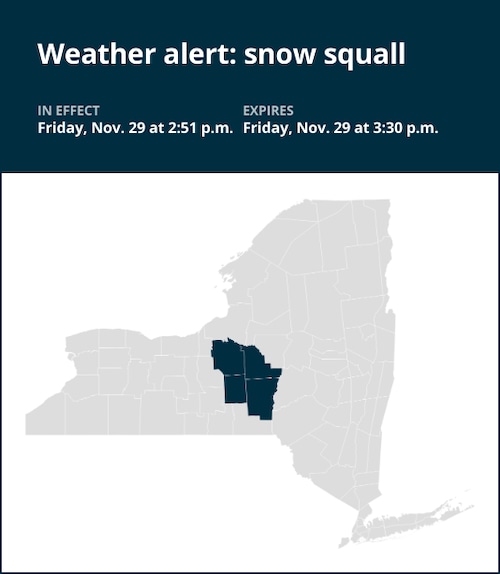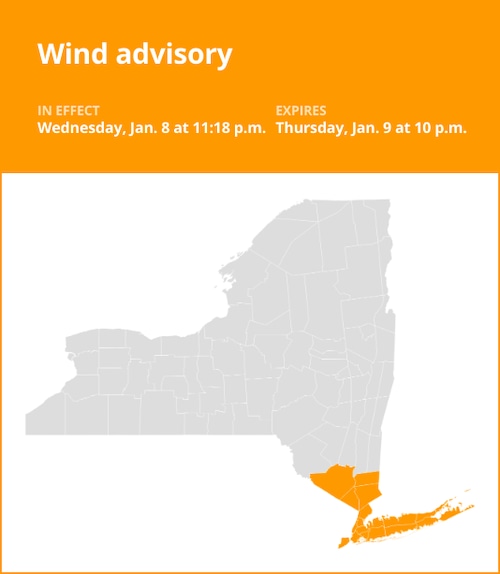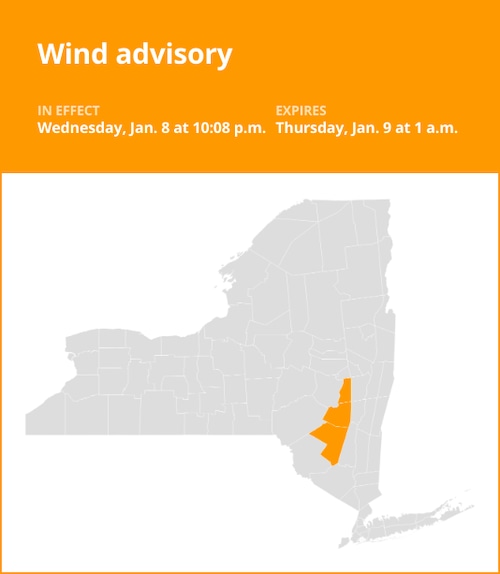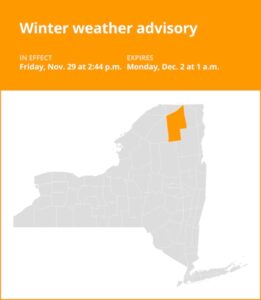At 2:51 p.m. on Friday, the National Weather Service said that Onondaga, Madison, Cortland, and Chenango counties would experience snow squalls through 3:30 p.m.
The meteorological service reports that “at 2:50 p.m., a snow squall was near De Ruyter, or 15 miles west of Hamilton, moving east at 25 MPH.”
Pompey, Eaton, Hamilton, Cazenovia, Morrisville, Stockbridge, Nelson, Lebanon, Cuyler, and Georgetown are among the places affected by the alert.
“In winter weather conditions, conditions can rapidly deteriorate,” the weather service says. Be ready for roads covered with ice or snow. Reduce your speed and give yourself more time to get there. If you have to drive into or through this squall, go with great caution. Accidents may result from abrupt changes in visibility and perhaps slick roads.
Snow squalls: Risks, differences, and safety seasures
What are snow squalls?
Strong cold fronts are frequently associated with snow squalls, which are short but intense winter weather phenomena. Even in the absence of a significant winter storm, they can quickly result in icy roads and unexpected whiteout conditions. Even while they often last less than an hour and may only cause slight snow accumulation, their reduced visibility, strong winds, and quickly dropping temperatures make them extremely dangerous for driving. In the past, these circumstances have resulted in fatal traffic accidents.
What is the difference between a snow squall and a snowstorm?
A snowstorm and a snow squall differ primarily in their strength and length. Usually lasting 30 to 60 minutes, snow squalls are short yet fierce. A snowstorm, on the other hand, can last for several hours or even days.
Snow squall warnings
Similar to tornado and severe thunderstorm warnings, snow squall alerts are short-fused and targeted at specific locations. These alerts offer vital, extremely targeted information that can save lives. If your neighborhood is under a snow squall warning, stay indoors or postpone driving until the squall has passed.
Actions during a snow squall warning
When a snow squall warning is issued, people should heed the weather service’s instructions, which include the following crucial steps:
Avoid or postpone travel: If your area is under a snow squall warning, stay indoors or wait for the squall to pass through before driving. During a snowstorm, there is absolutely nowhere safe to drive on the roadway.
Reduce speed and improve visibility: If you’re already on the road during a snowstorm, put safety first by slowing down. To improve visibility for other vehicles and yourself, turn on your danger lights in addition to your headlights.
Keep a safe distance: Make sure there is enough space between your car and the one in front of you. In order to account for decreased vision and the possibility of unpredictable road conditions during a squall, this precaution is crucial.
Steer clear of sudden braking: It’s also best to avoid applying the brakes too hard. This could lead to a loss of vehicle control and raise the possibility of a chain reaction collision on slick or icy roads.
Winter weather safety advice: Go to the weather service’s Winter Weather Safety page for advice on how to be safe before, during, and after a winter storm.
Make sure your car is ready for winter driving by checking the tires, brakes, lights, and making sure all the fluids are at the right levels before you go. A well-maintained car is better equipped to handle the challenges of winter driving.
Essentials for an emergency kit: Always keep a fully stocked emergency bag in your car with essentials like water, non-perishable food, blankets, a flashlight, and a first aid kit. For better tire traction, add jumper cables, flares or a reflective triangle, ice scraper, a map, a car cell phone charger, and cat litter or sand. Should you experience an emergency or unplanned breakdown while traveling, these supplies can be quite helpful.
In conclusion, putting one’s own safety first and following the weather service’s advice can greatly reduce dangers when a snow squall warning is in effect. People can travel through these winter dangers with more assurance and security if they are aware of them, plan beforehand, and remain alert.
United Robots offers a service called Advance Local Weather Alerts that gathers the most recent information from the National Weather Service using machine learning.
Note: Every piece of content is rigorously reviewed by our team of experienced writers and editors to ensure its accuracy. Our writers use credible sources and adhere to strict fact-checking protocols to verify all claims and data before publication. If an error is identified, we promptly correct it and strive for transparency in all updates, feel free to reach out to us via email. We appreciate your trust and support!







+ There are no comments
Add yours